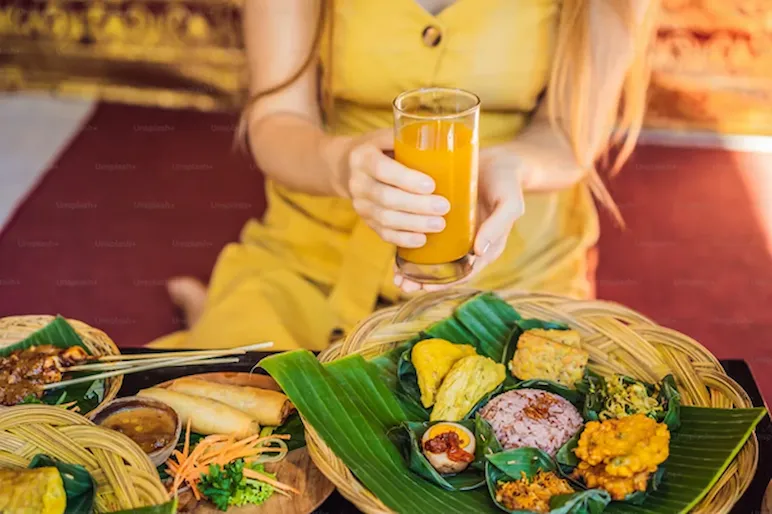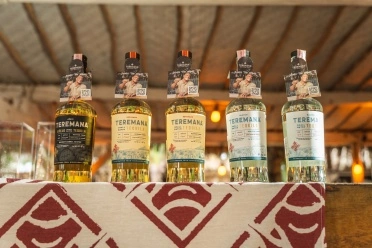In Bali, offerings—or banten—are omnipresent. Whether adorning a shrine, placed at a doorstep, or carried into grand temple ceremonies, offerings are integral to daily spiritual life. Most are crafted from coconut leaves, rice, flowers, and fruit—symbols of nature’s abundance and gratitude. Yet among these familiar, plant-based forms exists a rare and elaborate meat-based creation that holds deep symbolic meaning: the Gayah.
Among familiar plant-based form of 'banten' offering, exists a rare and elaborate meat-based creation that holds deep symbolic meaning: the Gayah.
An Offering of Flesh and Spirit
Unlike the usual floral arrangements, Gayah is composed almost entirely of pork—specifically its skin and fat. This elaborate creation is not simply an offering, but a profound representation of the human body, mind, and cosmos. Used in key Hindu ceremonies in Bali, particularly in rites of passage like weddings (manusa yadnya), the Gayah is both sacred sculpture and philosophical statement.
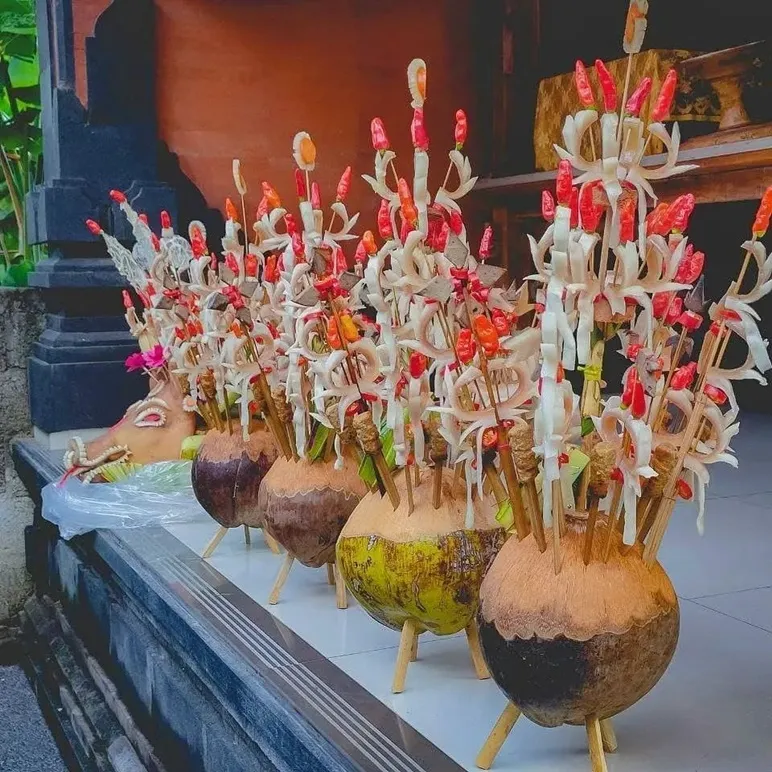
What makes Gayah extraordinary is not just its unusual material but the symbolism encoded in every detail. The fatty tissues and skin represent the human brain, of which nearly 90% is composed of fat. When crafted as a Gayah, the carvings and designs signify either the left brain (symbolized through ornate and beautiful decorations) or the right brain (represented by imagery related to life and vitality). It is this metaphorical connection to the human mind that makes the Gayah so intellectually and spiritually rich.
Anatomy of a Sacred Structure
In a typical ceremonial setup, the Gayah is placed at the apex of the offering structure. Below it lies the Banten Pregembal, shaped like an elephant's head—symbolizing the neck's nerve pathways that connect the brain to the spinal cord. This is followed by Bebangkit, a layered meat platter featuring organs such as the heart, liver, kidneys, lungs, and gallbladder. Each component is a metaphor for the human body, turning the entire offering into a symbolic microcosm.
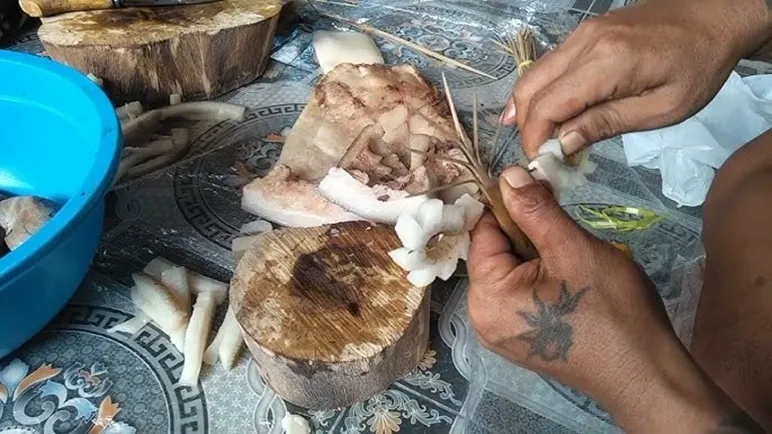
But the symbolic depth doesn’t stop there. In accordance with Lontar Dewa Tattwa (ancient Balinese spiritual texts), the animal used for the Bebangkit is consecrated to manifest Durga Dewi, the fierce protector goddess. The Gayah then becomes the vessel through which balance and harmony are sought in the universe. Surrounding it are nine meticulously crafted Jejatah—representations of the weapons of Dewata Nawa Sanga (the nine directional gods), forming a sacred circle known as Ngider Bhuwana.
These weapons—Vajra, Dhupa, Gada, Moksala, Naga Pasa, Angkus, Cakra, Trisula, and Padma—are not mere decorations. They are spiritual safeguards, summoning divine energy and anchoring the ceremonial space in cosmic order.
Sate Renteng: Culinary Art Meets Sacred Meaning
The Gayah is also central to the making of Sate Renteng, a dramatic arrangement of various skewered pork dishes including sate asem, sate serapah, kekuwung, and more. The sates are arranged around a whole pig’s head and body, with organs positioned according to cardinal directions—lungs in the east, liver in the south, gallbladder in the west, spleen in the north, and kidneys at the center. Red chilies, symbolizing Banaspati (elemental fire), enhance the visual impact and spiritual potency.
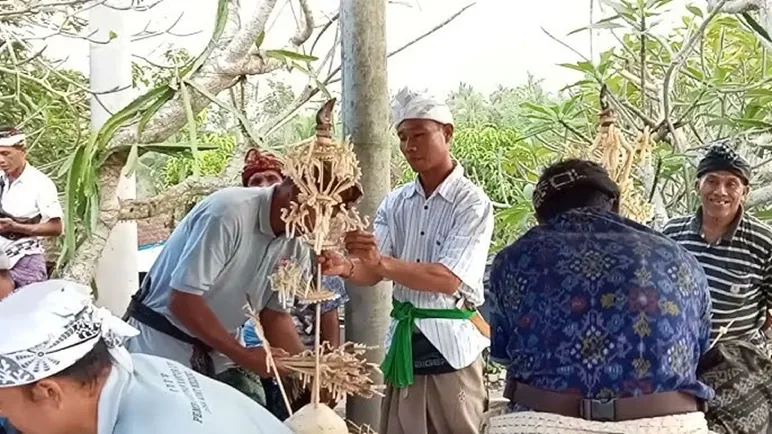
This entire arrangement becomes a culinary sculpture of the universe, with Sate Renteng acting as both offering and narrative. It recalls the mythological tale of Dewi Durga’s battle with Mahesasura, granted divine weapons by Dewa Wisnu in a bid to restore cosmic balance.
A Dying Art?
Despite its beauty and spiritual depth, Gayah is increasingly endangered. Its creation demands high levels of skill, especially in the detailed carving of pork skin—an art called Cacah Kemulan. In areas like Karangasem, only a handful of craftsmen remain who can execute the 20+ types of intricate carvings needed. Terms like lencing paku, bingin, and atep basang refer to specific patterns, each with its own name, form, and meaning.
But younger generations are losing interest. They might still learn how to prepare basic satay or sate lilit, but few are willing to master the full lexicon of sacred meatcraft. Without intervention—through education, documentation, or formal training—the art of Gayah may soon vanish.
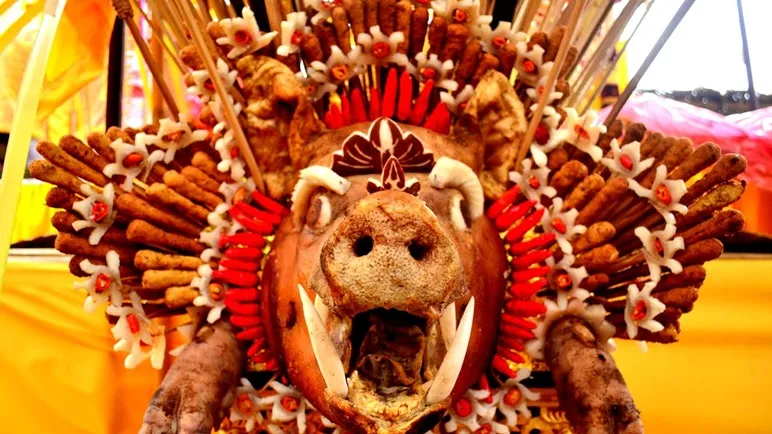
Merging sacred symbolism with the meticulous craft of meat carving, Gayah redefines the very idea of what an offering represents. In today’s growing interest in cultural depth and ancestral knowledge, it serves as a vivid reminder that ritual can be both visceral and intellectual—where every cut, skewer, and placement tells a story shaped by centuries of belief and ceremony.



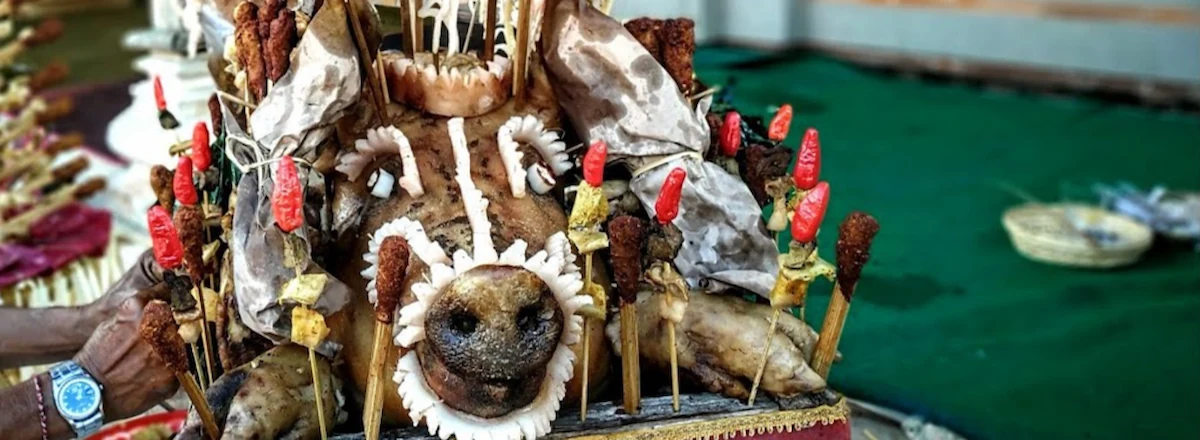
 Billy Bagus
Billy Bagus
 May 28, 2025
May 28, 2025
